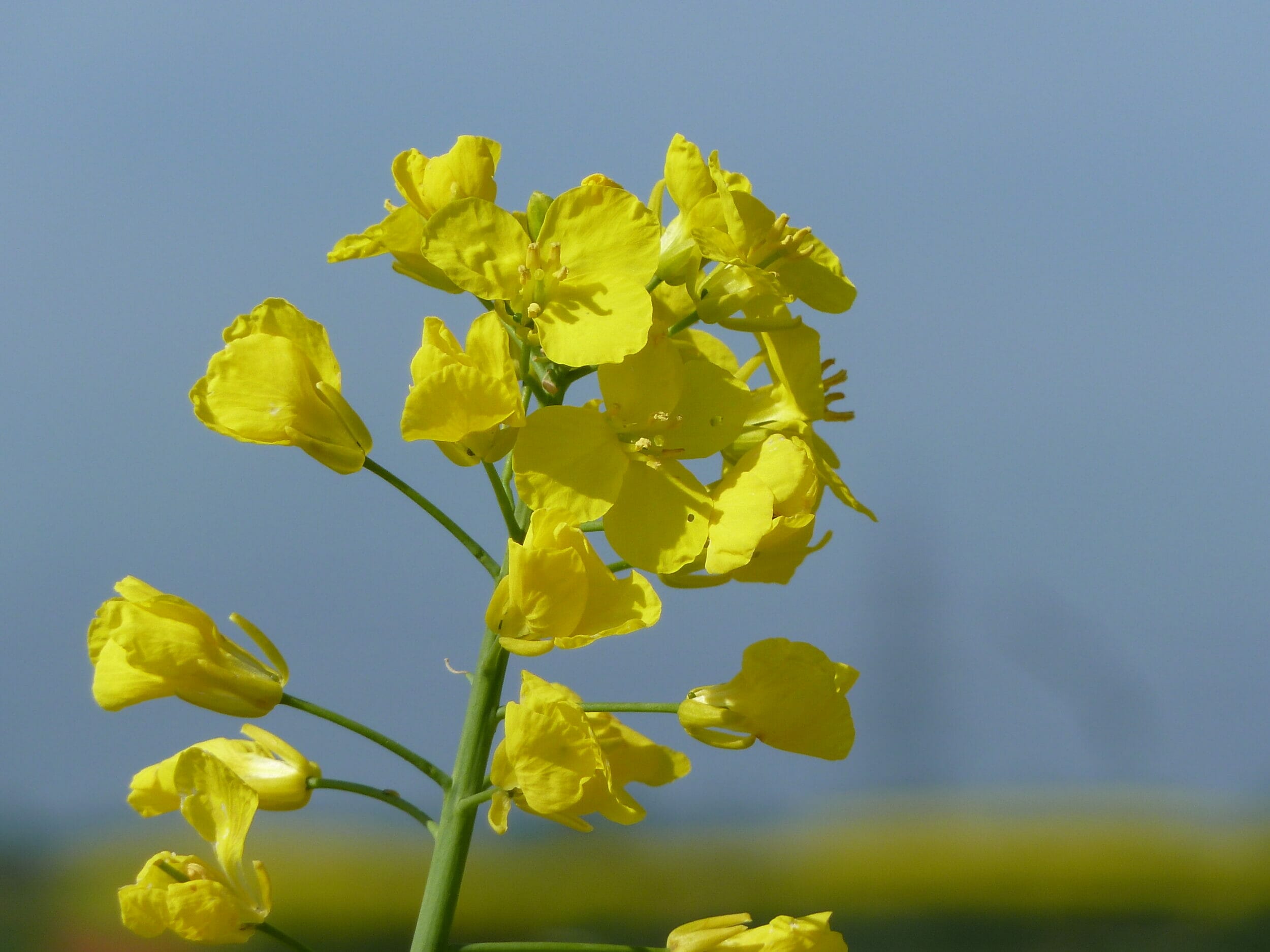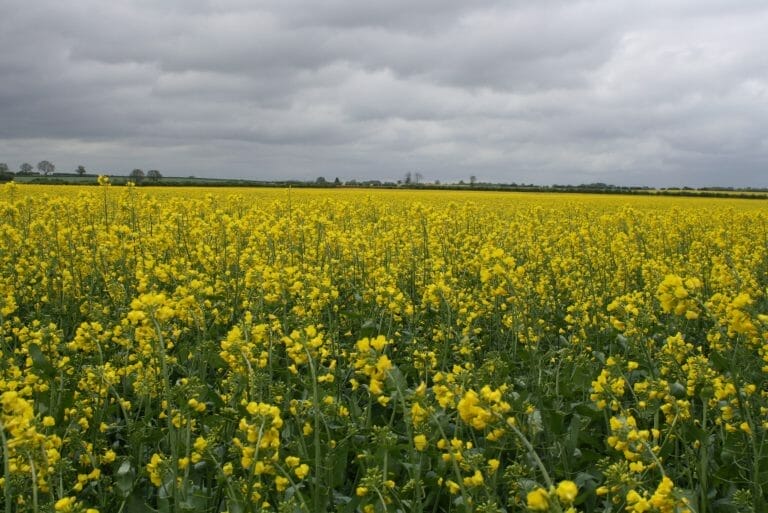The rotation at Winfield farm varies but is generally based on winter barley, oilseed rape, winter wheat followed by a break crop, back into wheat, and then winter barley again. The break crop can be clover, oats, or winter beans.
“We use rape as an entry crop to our winter wheat, and usually have around 53ha in the ground, depending on where we are in the rotation. Yields have averaged 4.7t/ha over the last five years, with anything above 4.5t/ha considered acceptable,” Robert points out.

“Fingers crossed we don’t see too much of an issue with CSFB – it’s certainly something we hope we never do, as we have a lack of break crop options, such as sugar beet.”
“We tend to grow two varieties at a time, which gives us a good comparison if we want to try something new. Key attributes in any variety we choose to grow are pod shatter resistance – we are on a disused airfield so the wind can be brutal – and vigour.”
“We need to have a decent amount of ground cover in the back-end, and it also needs to be quick off the blocks in the spring, once it is able to get hold of early nitrogen.”
For this reason, Mr Fleming has always opted to grow hybrids, and this year he is trying Aurelia for the first time, on the advice of his seed specialist; Douglas Bonn of Nickerson Seeds.
“We chatted through our options with Douglas and explained that we are looking for a variety that would offer the vigour and pod shatter that we needed, but also wanted a variety that wouldn’t get too high and would sit at a better height for combining.”
Aurelia is one of the highest yielding varieties on the 2020/21 AHDB Recommended List for the UK, with very high yields for the north (109%) explains Douglas.
“The variety offers an excellent set of genetic traits; including pod shatter resistance, TuYV resistance and also the best disease resistance profile out there, with an ‘8’ for light leaf spot and stem canker.” “It offers pretty much the whole package!”

“It’s vigorous and also has the standing power needed in Robert’s circumstances,” he explains.
Robert planted about 18ha of Aurelia last autumn, and so far, he is pleased with how it is looking, having come through the winter well, with good ground cover.
“The crop was drilled on 27th August, slightly later than we would normally drill, but we were behind on account of the wet weather. It went in at a seed rate of 3.2kg/ha, following cultivations with a 5-leg subsoiler.”
“The previous barley straw was all removed to help reduce the slug pressure. A starter fertiliser goes down the spout with the seed, the Aurelia got 130l/ha of liquid 7-20-0; we find that this gives it a good push to get going.”
“We have tended to move away from a pre-emergence herbicide to a post-emergence option, as it is often too dry to get maximum efficiency, with a follow-up of propyzamide if conditions allow. This means there is enough viable crop for us to spray, and allows us to identify any further issues in the crop.”
“Generally, we aim get some tebuconazole on in the autumn for light leaf spot control, as if we can’t then get on early in the spring, we have some protection. However, the high light leaf spot score of Aurelia, an ‘8’, may lead us to re-thinking our autumn fungicide plans this year – we shall see what conditions are like at the time.”
“It’s TuYV resistance is another tick box, allowing us to move away from pyrethroid insecticides, which is a massive bonus – we have a good relationship with the local beekeeper who places hives around our oilseed rape fields.”

































